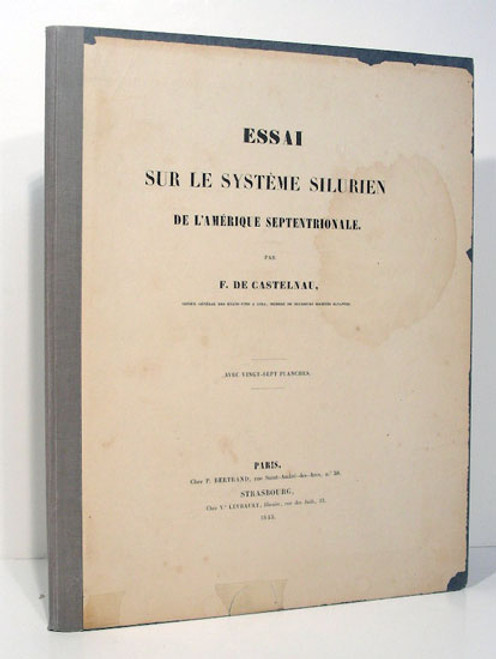Romé de L’Isle, Jean-Baptiste Louis; Essai de Cristallographie, ou Description des Figures Géométriques, Propres à différens Corps du Regne Minéral, connus vulgairement sous le nom de Cristaux. Paris: Chez Didot jeune, Knapen & Delaguette, 1772. Quarto, 1st edition, large paper copy (265 x 205 mm) untrimmed with wide margins, pp. half title, title, viii-xxxii, 427, 3, 2 folding letterpress tables, 10 folding engraved plates, (The plates show various crystal forms and diagrams) woodcut head- and tailpieces. The 2nd edition was an octavo size printing in four volumes.
The work is complete and in a 20th century half calf over marbled boards with ornate gilt spine panels and spine titles, marbled end sheets. The text is on thicker paper then the octavo size second edition. The text has marginal light toning or browning to a few pages at the start of the work. The majority of the text, the plates and tables or clean and bright. Early light penciled notation on first end sheet. Over all in very good condition.
Romé de L’Isle (1736-1790) was a French crystallographer and mineralogist. He is best remembered for this fundamental work on crystallography. In it Romé de L’Isle attempted to make a comprehensive classification of crystals. His work appeared 12 years before Haüy’s Essai d’une Théorie sur la Structure des Cristaux. Romé de L’Isle established that various shapes of crystals of the same natural are closely related to each other. Measurements he made with a goniometer proved that the angles between corresponding faces of a crystal are always the same. This is described as the first law of crystallography. In addition, he proved that these angles are a characteristic of mineral type. Romé de L’Isle “identified 110 crystal forms (drawing upon Linnaeus, who had listed forty) and described in minute detail the minerals that exhibited them. He subdivided the various substances into salts, stones, pyrites, and metallic minerals, stating that he agreed with Linnaeus that geometrical form is the chief characteristic by which minerals may be classified. Romé de L’Isle’s Cristallographie ranks as one of the great contributions to the science of crystals. He also provides an excellent annotated bibliography on pages xvii-xxviii.















